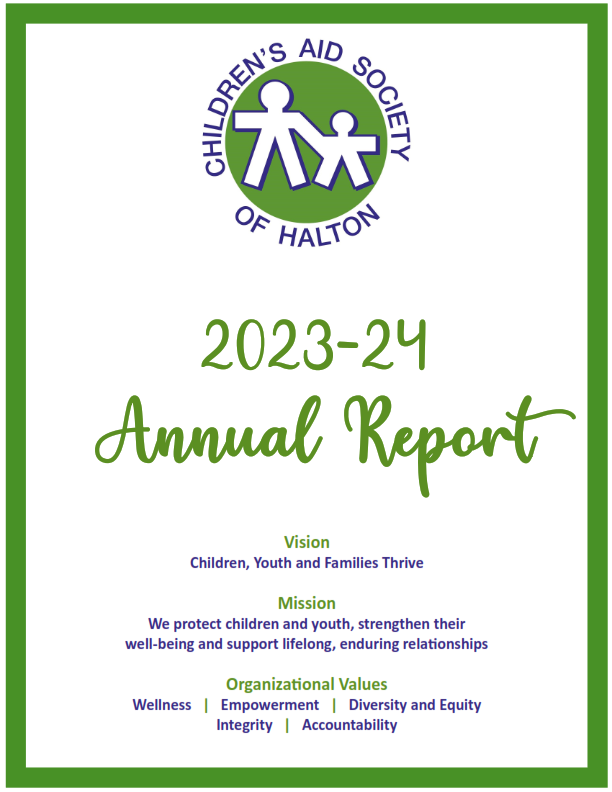
Welcome to the 2023-24 Halton Children’s Aid Society’s (Halton CAS) Annual Report!
Our annual report is an opportunity to talk to you, our community, about the work of the Society. What do we want to say to you? We are here to help! This is the message. This is the commitment. This is the daily intention that each of our staff brings to their work. And this is the focus of our annual report. An examination of how we helped children, youth and families in the community last year.
The story of how this intention unfolds is in the numbers. Last year, Halton CAS received 4,514 referrals. Each one representing a call from a concerned community member about the safety and well-being of a child or youth. Of that 4,514, Halton CAS conducted 2,109 child protection investigations and assigned a further 731 cases to our community links worker for connection to community resources.
Our Service Delivery Model is predicated upon the following principles.
- We will provide the best, most responsive service to families.
- We will develop staff knowledge and skills in various specializations.
- Early help, assessment and community linkage are preferred over traditional forensic investigations.
- We strive for manageable workloads for our staff to enhance their professional capacities.
- We will not raise children in care.
Our top referral source is law enforcement with 27% of referrals. The second highest number of referrals comes from education personnel with 21%. The third highest number of referrals comes from families themselves at nearly 8%. This is important data for Halton CAS to understand where the needs are in the community, what types of problems families are facing, and where the numbers tell us we need to apply the lens of Equity, Diversity and Inclusion to critically examine the story inside.
There has been a discernible change in the well-being of our community, challenging our staff’s ability to fully realize these principles, particularly the last two years. With the erosion of the social safety net in communities across Ontario over the past number of years, and the compounding effect of the pandemic, the vulnerable in our communities are affected – directly and devastatingly. Among this population are children, youth and their families with complex social needs and issues. Furthermore, in the post-COVID environment, our staff report that the work is more demanding and complex.
“Society and community have drastically changed in a post-COVID world in how people relate to one another or how communities interact. This impacts how we do our work and who we need to engage with, from both a client level and community partner level, for services and support.”
In an environment where community social services are stretched to capacity, there has been an increase in the number of children and youth who are struggling to live with serious and complex issues. Their families struggle to cope with their needs. Some families, brought to the breaking point, arrive at the door of the child welfare agency as a last resort. This is when we bring all resources to the table creating a plan for that child/youth. We do everything we can to not bring them into care. If that is unavoidable, we look to kin or another natural setting for a temporary residential respite for the child/youth and their family. This is how we help. This is how we uphold our service principles. And we never do it alone. Our planning relies on community partners, clinicians, and professionals who join us at the table to create these plans alongside families.
Joyce See (Board Chair) Janice Robinson (Executive Director)